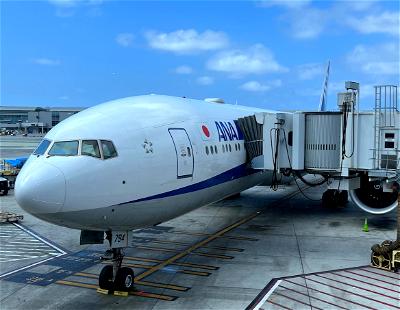In early March I wrote about how the National Transportation Safety Board (NTSB) was investigating a fatality that occurred on a Bombardier Challenger 300, which was due to fly from Keene, New Hampshire (EEN), to Leesburg, Virginia (JYO). There were five people on the plane, including two pilots and three passengers. The passengers were a couple and their son, who were completing college tours in New England.
At the time, the NTSB reported that a passenger fatality was due to severe turbulence, though there’s now an update. As it turns out, there wasn’t any turbulence at all…
In this post:
Private jet fatality linked to aircraft issues
The NTSB has published its preliminary report about the March 3 incident that caused a fatality. So, what actually happened? Here’s what the NTSB report reveals about the sequence of notable events:
- The first takeoff roll was aborted at a high speed, as the first officer noticed that the right side airspeed indictor didn’t match what the left side airspeed indicator was showing
- The pilots taxied back to the apron, and upon exiting the aircraft, noticed that the right side pitot tube cover hadn’t been removed
- After restarting the engines, the pilots reported that an Engine Indicating and Crew Alerting System (EICAS) advisory message of “RUDDER LIMITER FAULT” annunciated
- The pilots performed two ground avionics “stall tests” to clear the message, as they had received this advisory in the past; the tests didn’t clear the message, but the decision was made to continue the flight, given that this was an advisory, and not a caution or warning
- During the next takeoff roll, the acceleration was normal, but the first officer noticed that the V-speeds weren’t set, so they instead used speeds from their own memory
- The captain reported that the autopilot had been engaged, and while climbing through 6,000 feet, they observed multiple EICAS caution messages, including “AP STAB TRIM FAIL,” “MACH TRIM FAIL,” and “AP HOLDING NOSE DOWN”
- The pilots then followed the standard checklists for these kinds of warnings; the first action was to move the stabilizer trim switch (“STAB TRIM”) from “PRI” (Primary) to “OFF”
- As soon as the switch was moved, the airplane abruptly pitched up; the captain managed to regain control of the airplane within a few seconds, after the airplane’s pitch oscillated up and down
- The captain then had no problem manually flying the aircraft
- At this point the passengers informed the pilots of an injury, so the first officer exited the cockpit to check on the passengers and to provide medical attention; at that point a medical emergency was declared, and the aircraft diverted to Hartford
- Emergency vehicles met the aircraft, and unfortunately the injured passenger was declared deceased later in the day
- The pilots reported that they didn’t experience any remarkable turbulence during the flight; the other four people onboard (two pilots and two other passengers) didn’t sustain any injuries
How much did the aircraft pitch?
One has to wonder how much an aircraft was pitching up and down in order to lead to a fatality. According to the flight data recorder, the aircraft pitched up around 11 degrees during the incident, and reached a vertical acceleration of around +3.8g. The plane then entered a negative acceleration of around -2.3g. The plane then pitched up to about 20 degrees with a vertical acceleration of +4.2g, and then lowered to +2.2g.
I have to imagine that this was a pretty unpleasant ride that felt kind of like a roller coaster for a brief period of time.
Both pilots were experienced in general, though not with this plane — the captain had a total of 5,061 flight hours, with 88 hours in this kind of plane. Meanwhile the first officer had 8,025 hours, with 78 hours in this kind of plane. Both pilots had been rated in the Bombardier Challenger 300 in October 2022, which is why they had so few hours on this jet.
Always keep your seatbelts fastened
Interestingly the NTSB’s preliminary report doesn’t list whether or not the passenger had her seatbelt fastened at the time of the incident. Given that she tragically suffered fatal injuries, while no one else sustained any injuries, it seems like not being properly buckled in could have been a factor here.
While this incident didn’t end up coming down to severe turbulence, the moral of the story is the same — always buckle up, because there are lots of things that can go wrong here.
Bottom line
Someone died due to injuries sustained on a private jet earlier this month. While the initial report was that this was due to severe turbulence, it appears the aircraft’s erratic movements were actually due to a trim issue. It’s terrible that someone died from an incident like this, and it’s an important reminder to keep your seatbelt fastened.
It’s hard to know what exactly to make of this incident. On the one hand, it’s bizarre that the pilots forgot to remove the pitot tube cover, which seems like a pretty basic thing to get right. On the other hand, it seems like they went through checklists pretty thoroughly when the incident arose.
There were obviously some issues with this aircraft, though it doesn’t seem like they should have caused an outcome like this, as the pilots determined that these issues were deferrable.
What do you make of this incident?





Based on the description of the multiple error messages that the pilots received and that they didn’t pursue further investigation, the pilots were at fault. I was dismayed at the repeated statements that the passenger probably wasn’t wearing her seatbelt when they couldn’t substantiate it. Moreover, the multiple times “make sure you wear your seatbelt “ was made started to sound like blaming the victim. From the details it appears that had the pilots attended...
Based on the description of the multiple error messages that the pilots received and that they didn’t pursue further investigation, the pilots were at fault. I was dismayed at the repeated statements that the passenger probably wasn’t wearing her seatbelt when they couldn’t substantiate it. Moreover, the multiple times “make sure you wear your seatbelt “ was made started to sound like blaming the victim. From the details it appears that had the pilots attended to the error messages, this woman wouldn’t have died.
Not practicing with the American or aviation jurisdiction, I ask, do private air conveyance contracts have waiver provisions for pilots?
The pilots should be charged with murder.
You mean manslaughter, right? Murder implies intention vs. incompetence.
The pilots should be charged with murder. Horrific and inexcusable sucession of errors. Negligence and incompetence at the highest levels.
I agree wholeheartedly with the second half of your comments. But You mean manslaughter, right? Murder implies intention vs. incompetence.
The amount of pilot errors from forgetting the pitot tube covers, not going through the QRH for the “rudder limiter fault” (which is a NO GO item) and then they actually ran the wrong checklist too. They stated they had the amber CAS “AP Stab Trim Fail” but they ran the “PRI Stab Trim Fail” checklist. The two are completely different.
So you could say that the pilots, who were both low time (under...
The amount of pilot errors from forgetting the pitot tube covers, not going through the QRH for the “rudder limiter fault” (which is a NO GO item) and then they actually ran the wrong checklist too. They stated they had the amber CAS “AP Stab Trim Fail” but they ran the “PRI Stab Trim Fail” checklist. The two are completely different.
So you could say that the pilots, who were both low time (under 100 hours in the aircraft) acted in a careless and reckless manner and made numerous errors in every phase of the flight that eventually led to the death of one of their passengers.
Definitely going to be interesting on the final findings of this and if the pilots are violated by the FAA for their actions.
Pilots did a pretty solid job as far as I'm concerned. Went through the checklist efficiently and fixed the destabilization quickly.
I agree with you Ben, the fact no one else had any injuries implies the deceased passenger did not have their seatbelt on properly. I can't think of why else she'd have been the only one impacted unless an object came flying in and hit her. I think the report would have mentioned that though.
The pilots did a horrible job. They ran the wrong checklist. They stated they had the amber CAS “AP Stab Trim Fail” but they ran the “PRI Stab Trim Fail” checklist. The two are completely different.
Busted!!!!
Another score for human error.
Is it customary to engage the AP less than 2 min after takeoff? Can’t pilots these days fly the plane for at least 10-15 min before handing the controls over to a computer? As a passenger, what exactly am I paying for???
@ Bill -- It's definitely customary. Whether or not it should be is more open to debate...
Depends on how nice of a day it is and where in the world you are. In some parts of the world, the pilots engage the AP from basically right after takeoff to just before landing.
US pilots usually like to fly a bit, but it doesn't always happen.
You are paying to get from one place to another.
I'm sure there's a website for you to pay someone in a pilot uniform for your fetish.
But generally, you're paying for transportation.
Any shnook with a couple days of training can get the aircraft from A to B without incident most of the time, if nothing goes wrong. You're paying for the differences between 'most of the time' and 'everytime' and 'if nothing' and 'even if something'.
The airline I fly a bit with uses a lot of the A320 family on shorthaul, and the Autopilot disconnect sound ("Cavalry Charge") is a series of short chirps that...
Any shnook with a couple days of training can get the aircraft from A to B without incident most of the time, if nothing goes wrong. You're paying for the differences between 'most of the time' and 'everytime' and 'if nothing' and 'even if something'.
The airline I fly a bit with uses a lot of the A320 family on shorthaul, and the Autopilot disconnect sound ("Cavalry Charge") is a series of short chirps that you can hear from row six and forward, if you're listening for it. So I know their SOP is to get established on the glideslope and then hand-fly it down, unless visibility is below minima, in which case there's an announcement to turn off cellphones, and the cavalry charge doesn't sound until the rollout.
Your first paragraphs is spot on.
And not just about piloting an aircraft.
But this is so poorly understood.